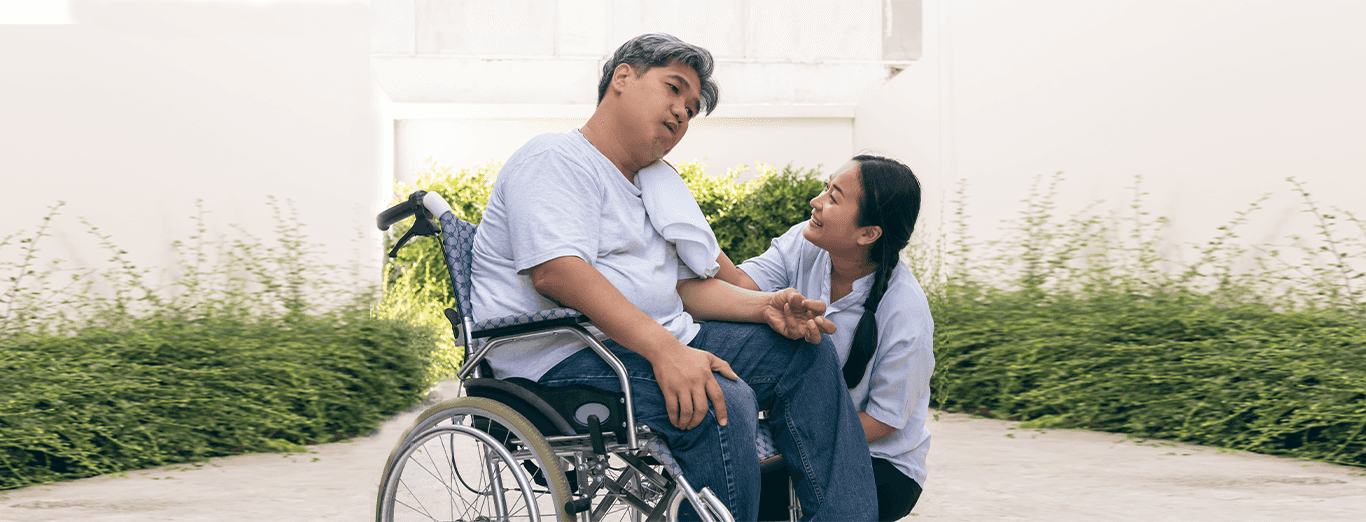Lifestyle Routine of Paralysis Patient: Reclaiming Strength, Dignity, and Joy
 Paralysis may change the body—but it doesn’t have to steal the soul. For patients living with paralysis, a well-designed lifestyle routine isn’t just about survival—it’s about reclaiming control, nurturing hope, and building a life filled with meaning. This guide offers a holistic, empowering daily structure tailored to the physical, emotional, and spiritual needs of paralysis patients.
Paralysis may change the body—but it doesn’t have to steal the soul. For patients living with paralysis, a well-designed lifestyle routine isn’t just about survival—it’s about reclaiming control, nurturing hope, and building a life filled with meaning. This guide offers a holistic, empowering daily structure tailored to the physical, emotional, and spiritual needs of paralysis patients.
Understanding the Journey: Life After Paralysis
Paralysis, whether caused by spinal cord injury, stroke, or neurological conditions, can affect mobility, speech, and independence. But with the right support system and daily routine, patients can experience healing, connection, and purpose.
A lifestyle routine for paralysis patients is more than a schedule—it’s a lifeline. It helps prevent complications, boosts emotional resilience, and restores a sense of agency.
Morning Routine: Rise with Intention
🛏️ Repositioning and Circulation
The day begins with gentle repositioning to prevent pressure sores and stimulate blood flow. Adjustable beds, cushions, and caregiver assistance ensure comfort and safety.
🧼 Hygiene and Dignity
Cleanliness is healing. Morning care includes:
- Sponge baths or assisted showers
- Oral hygiene and grooming
- Moisturizing to protect fragile skin
These rituals restore dignity and set a positive tone for the day.
🍽️ Nourishing Breakfast
Fuel the body with:
- Soft proteins (eggs, yogurt, tofu)
- Whole grains (oats, multigrain toast)
- Antioxidant-rich fruits (berries, bananas)
- Hydration (herbal teas, water)
For patients with swallowing difficulties, pureed or liquid options ensure safety and nutrition.
Midday Routine: Movement, Mind, and Meals
🧘♂️ Physical Therapy and Mobility
Even limited movement matters. Guided exercises may include:
- Passive range-of-motion stretches
- Wheelchair transfers and posture support
- Breathing exercises to strengthen lungs
These sessions prevent stiffness, improve circulation, and support recovery.
🧠 Mental Engagement
Keep the mind alive with:
- Audiobooks or podcasts
- Memory games or puzzles
- Meaningful conversations
- Nature views or music therapy
Mental stimulation combats isolation and nurtures emotional health.
🍲 Lunch and Medication
Midday meals should be rich in fiber and protein:
- Lentils, grilled chicken, or paneer
- Cooked vegetables and brown rice
- Smoothies or soups for easier digestion
Medications are administered with care and documented for safety.
🌤️ Afternoon Routine: Rest and Renewal
💤 Restorative Nap
A short nap helps recharge energy and reduce fatigue. Patients are repositioned for comfort and monitored for skin health.
🧴 Skin and Bladder Care
Routine checks prevent infections and discomfort. Catheters or adult diapers are changed hygienically, and skin is inspected for pressure points.
🌇 Evening Routine: Winding Down with Grace
🚶♀️ Light Activity and Leisure
Depending on ability, patients may enjoy:
- Wheelchair strolls
- Guided meditation or prayer
- Calming music or storytelling
These moments bring peace and connection.
🍛 Dinner and Supplements
Dinner should be light and healing:
- Steamed vegetables, soups
- Calcium and vitamin D supplements
- Herbal teas for digestion and relaxation
Avoid heavy meals to support restful sleep.
🧘♀️ Emotional Support
End the day with:
- Gratitude journaling
- Spiritual reflection
- Heartfelt conversations
These rituals help patients feel seen, heard, and loved.
🌙 Night Routine: Preparing for Restful Sleep
🛏️ Comfort and Safety
Before sleep:
- Clean bedding and proper positioning
- Pillows for joint support
- Room temperature and lighting adjusted
🌌 Sleep Hygiene
Encourage:
- Consistent bedtime
- White noise or soft music
- Deep breathing or visualization
Quality sleep supports healing and mental clarity.
📅 Weekly and Monthly Wellness Practices
🩺 Medical Monitoring
Regular checkups track progress:
- Blood pressure and glucose levels
- Skin assessments
- Medication reviews
🧼 Grooming and Self-Care
Weekly rituals include:
- Haircuts or shaving
- Nail trimming
- Clothing changes
These boost confidence and self-worth.
🎨 Creative Expression
Hobbies bring joy:
- Painting, knitting, or writing
- Gardening or caring for plants
- Listening to music or photography
Creativity is a form of healing.
🤝 The Role of Caregivers: Compassion in Action
Caregivers are lifelines. Their responsibilities include:
- Assisting with mobility and hygiene
- Administering medications
- Offering emotional support
- Monitoring health changes
Caregiver training and emotional care are essential to prevent burnout and build trust.
💡 Tips for Building a Sustainable Routine
- Personalize the schedule to match physical and emotional needs
- Use visual aids like calendars or checklists
- Celebrate small victories to boost morale
- Stay flexible—adjust as recovery evolves
- Empower the patient to make choices and express preferences
Final Thoughts: A Life Worth Living
A lifestyle routine for paralysis patients is not just about managing symptoms—it’s about reclaiming life. With structure, compassion, and creativity, every day can hold moments of joy, dignity, and connection.
Whether you’re a patient, caregiver, or loved one, remember: healing is not just physical—it’s emotional, spiritual, and deeply human. And every routine, no matter how simple, is a step toward hope.
